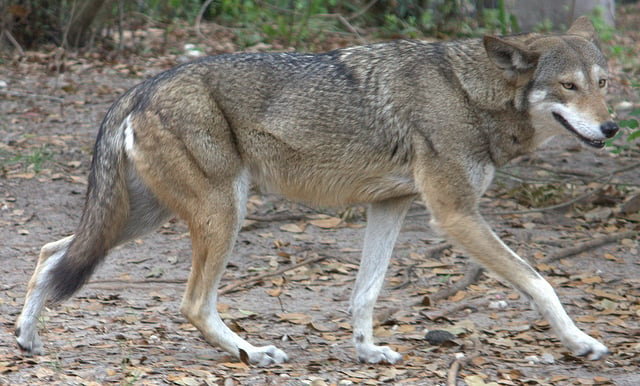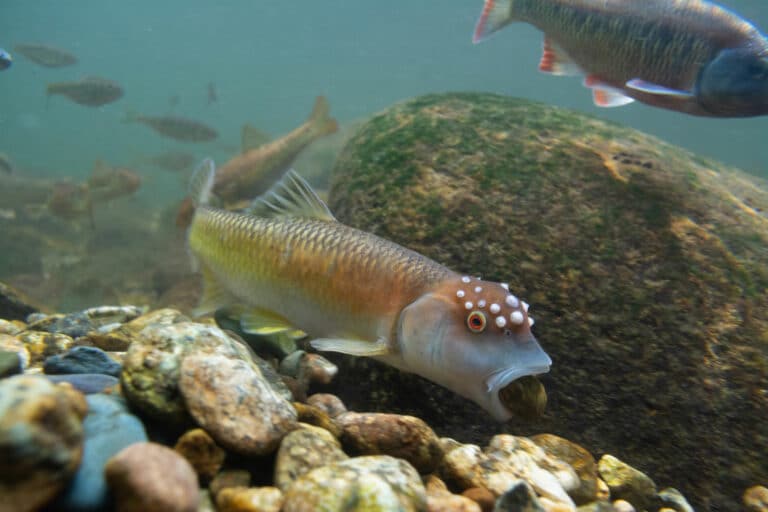It’s their howl,” says Kim Wheeler, president of the Red Wolf Coalition. “That’s what keeps me going. It’s a sound that falls somewhere between the deep baritone of the grey wolf and the yip of the coyote. It’s their call to life. And now, because the program to protect them is under such scrutiny, there’s a very really possibility that their voice will be silenced.”
Once a top predator throughout the southeastern United States, the red wolf almost vanished 50 years ago. After being named an endangered species, a captive breeding program began in 1973. As the captive population grew, scientists considered where the red wolf could be reintroduced.
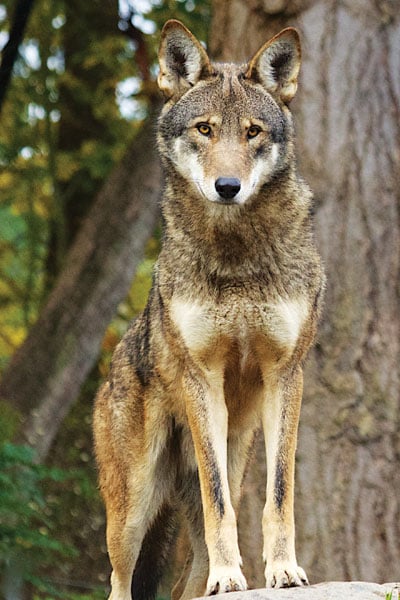
In 1987, six pairs of wolves were released in the Alligator River National Wildlife Refuge located within a five-county region—Beaufort, Dare, Tyrrell, Hyde and Washington—of eastern North Carolina. Those 1.7 million refuge acres are now home to the only wild population of red wolves in the world, managed for the last 29 years by the U.S. Fish & Wildlife Service’s Red Wolf Recovery Program. Until recently, it has been one of the most successful wildlife recovery programs in the country’s history.
But today, both the program and the wild red wolf face possible extinction once more. In the last few years, the wild population has decreased from over 120 wolves to 45— mainly due to shotgun mortality. Red wolves can resemble coyotes—especially at night—and a handful of local landowners have balked at hunting restrictions to protect red wolves. At the request of the North Carolina Wildlife Resources Commission and pro-hunting landowners, the U.S. Fish & Wildlife Service has temporarily suspended the red wolf reintroduction and adaptive management program.
Voices both for and against the red wolf have demanded immediate action; in September, the U.S. Fish & Wildlife Service will announce whether they will continue the recovery program or remove the last remaining wild red wolves.
“The situation has gotten so much more dire,” says Brett Hartl, Endangered Species Policy Director for the Center for Biological Diversity. “We didn’t expect the population to drop as quickly as it has. We’re at a crisis point. They won’t last much longer unless there’s a change in course.”
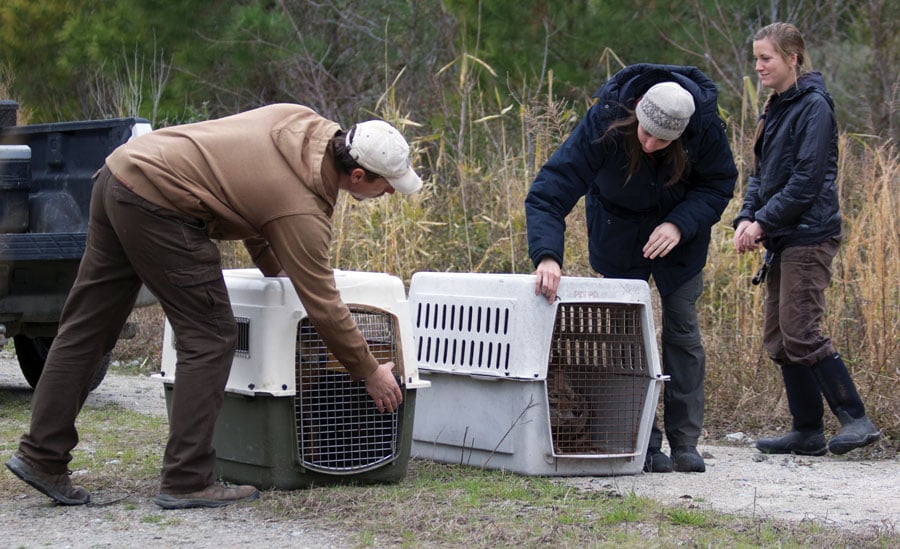
The red wolf stands just over two feet tall, with pointed ears, long legs, and large feet. Red wolves weigh up to 80 pounds, and some of its fur has a reddish tint. Shy and reclusive, red wolves roam the woods at night in search of food such as rabbits and raccoons as well as insects, berries, and occasionally, deer.
“Red wolves are not unlike our human families,” Wheeler says. “They have puppies, they take care of them, they eat, they often travel in packs and they do their normal wolf activities.”
In 1988, the first wild litter of red wolf pups was born on the Alligator River Peninsula. As the population grew, scientists attempted to establish wild red wolf populations in other areas, including St. Vincent National Wildlife Refuge in Florida (in 1990) and the Great Smoky Mountains National Park (in 1992). But none of the other wild populations thrived, and all have subsequently ended.
Meanwhile, the North Carolina population increased under the watchful eye of the U.S. Fish and Wildlife Service’s Red Wolf Recovery Program. On the Alligator River Peninsula, the wolves have over one million designated acres to roam. But from their first days, they wandered onto private land. And that’s where the resistance began.
“The program has been controversial throughout its existence,” says Pete Benjamin, Raleigh Field Supervisor for U.S. Fish & Wildlife (USFWS). “Generally I’d have to characterize it as successful. It was the first effort of its kind to restore a large carnivore to its historic range, and this program was the model for other predator re-introduction programs, including the grey wolves to Yellowstone.”
Indeed, for the first fifteen years of the program, the human and red wolf populations co-existed in relative peace. Sightings were rare, but tourists still traveled to the area in the hopes of seeing the elusive animals. USFWS worked with farmers who encountered red wolves on their private lands; the red wolves, for their part, often helped control predator populations during farming seasons.
USFWS monitored the red wolves, implementing various programs including the sterilization of coyotes to prevent a ‘coy-wolf’ hybrid population. Red wolves live an average of six to seven years in the wild; the Alligator River Peninsula population peaked at an estimated 130 red wolves.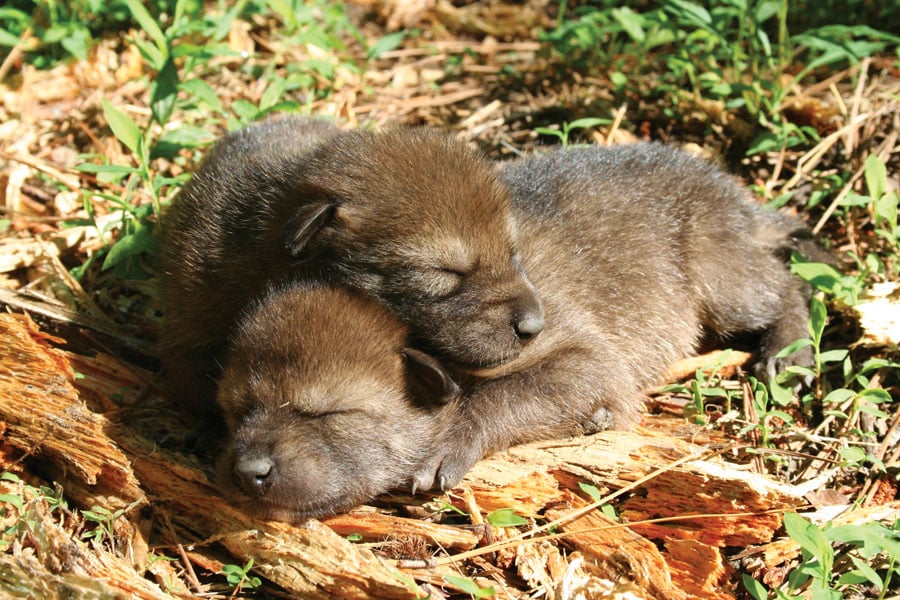 But in the last five years, that number has plummeted. One major reason: gunshot mortality. Coyotes and red wolves are similar in appearance, and the two have sometimes bred.
But in the last five years, that number has plummeted. One major reason: gunshot mortality. Coyotes and red wolves are similar in appearance, and the two have sometimes bred.
Coyotes have moved eastward across the United States, and when they arrived in the Alligator River Peninsula, hunters did not want them preying on deer or local livestock. Private landowners, often confusing red wolves for coyotes, began shooting red wolves. From 2012-2015, an estimated 30 of 65 red wolf deaths were attributed to shooting.
Hyde County Manager Bill Rich owns over 3,000 acres in the area. “There was never really a problem with the introduction of the red wolf,” Rich says. “But it was the red wolf going onto private land and the attraction of the coyote. Now, the coyotes have taken over.”
In 2012, in an effort to control the booming coyote population, North Carolina instituted a policy allowing night hunting of coyotes, which is the most effective time for hunting them—but also when it’s hardest to distinguish between a red wolf and a coyote.
In response, conservation groups the Defenders of Wildlife, the Red Wolf Coalition, and the Animal Welfare Institute enlisted the Southern Environmental Law Center to sue the North Carolina Wildlife Resources Commission (NCWRC), a state agency funded in part by hunting and fishing licenses. They argued that, by authorizing the shooting of coyotes within the recovery area, N.C. Wildlife Resources Commission was causing red wolves to be shot and killed in violation of the Endangered Species Act. On May 13, 2014, the plaintiffs won when a federal court banned all coyote hunting in the recovery area.
“That really cemented what had been kind of a simmering local resentment and opposition to the red wolf program,” Benjamin says. “That act of taking away the ability of landowners to hunt coyotes at night galvanized local public opposition to the recovery effort—and that has prompted and led to the chain of events that has us taking a look at the program.”
In November 2014, the plaintiffs and N.C. Wildlife Resources Commission went back to court and asked the federal judge to amend his order in November 2014, to limit his ban only to night hunting of coyotes. The judge complied.
Despite this concession, the controversy did not end. At the request of several private landowners, the N.C. Wildlife Resources Commission then asked U.S. Fish & Wildlife to terminate the reintroduction program and remove the wolves from all private lands.
“As long as U.S. Fish & Wildlife has a red wolf program, we’re obligated to collaborate with them,” says Brandon Sherrill of the N.C. Wildlife Resources Commission. “But the commissioners asked to terminate the program because of impacts that it’s had on private landowners. Wolves were originally released on federal lands only, but animals can’t see property lines.”
In response, USFWS hired the nonprofit, independent Wildlife Management Institute (WMI) to take a closer look at their program through the lens of three main areas: supporting science, program management, and human dimensions, to examine whether it should be continued as well as what changes might need to occur.
After a lengthy examination, WMI recommended that the program should continue, but with some improvements. “WMI concluded that the recovery program management could have been improved if a more interdisciplinary approach was used to better respond to public concerns and information needs,” wrote WMI president Steve Williams. “We also concluded that the rules established for the recovery program were not always followed.”
WMI submitted a list of recommendations for how the program might be improved. But USFWS, under political pressure, has ignored those findings.
“What we’re seeing is the program getting slowly shut off, bit by bit, which is really disappointing since this was once one of the most successful and innovative programs in the history of restoration,” Hartl says. “I think there’s a lot of pressure from the N.C. Wildlife Resources Commission which is opposed to the red wolves.”
With the red wolf program languishing, in November of 2015, the Southern Environmental Law Center (SELC) filed another lawsuit, this time against the U.S. Fish & Wildlife Service. On June 20, they also filed an emergency motion with U.S. District Court to stop USFWS from capturing and killing red wolves. The litigation is pending.
“The state didn’t like our win on coyote hunting, and they pushed back hard—so hard that they asked for red wolves to be declared extinct and removed from North Carolina,” explains Sierra Weaver, senior attorney with the Southern Environmental Law Center. “After that point, the U.S. Fish and Wildlife Service scaled back a lot of its efforts to protect and recover the species, giving in to a lot of pressure from the state and a small number of vocal landowners.”
One example: the allowance of landowners to shoot a red wolf on their property via permit from USFWS. In 2015, a landowner shot and killed a female red wolf who was known to have given birth to multiple litters and was exhibiting denning behavior at the time that she was killed.
USFWS has also removed red wolves from private lands when landowners have requested it. “They have issued those permits for no reason other than the wolves are there and the landowners don’t like it,” Weaver says. “The U.S. Fish and Wildlife Service is failing to comply with the Endangered Species Act’s requirements to not only ensure that the species doesn’t go extinct in the wild, but to actually make sure they recover. They aren’t basing their management on the best available science, and they haven’t looked at the current status of the species on the ground in North Carolina.”
Indeed, in the past year, the USFWS has eliminated the recovery coordinator position for the program, stopped reintroducing red wolves into the recovery area, ended coyote sterilization and removal, and stopped their popular and successful education programs about red wolves. Instead, they have issued permits allowing landowners to kill individual red wolves. And despite USFWS acknowledging in a 1999 briefing paper that removal of red wolves may be detrimental to the species’ recovery, they began honoring requests from landowners for red wolf removals—and those numbers have skyrocketed.
According to the motion for emergency relief filed by the SELC in late June, “Internal documents show that by October 2014, engendered by a campaign by a handful of landowners opposed to red wolf reintroduction, the Service had received over 400 requests from private landowners for removal of wolves and for authorization to kill wolves.”
One of those requests came from Lynn Clayton, who owns about 550 acres in Hyde County. “We used to have a lot of deer on our property—where woods were across the field, you could see 100 deer, easy,” Clayton says. “Now you ride through, and if you see one or two, you’re lucky. I used to see more deer than coyotes, and now I see nothing but coyotes.”
Clayton said he recently caught a red wolf on his property on a Tuesday, which the U.S. Fish and Wildlife Service retrieved and took back to the refuge. But the refuge land, Clayton says, is largely flooded, leading the wolves to once again enter private lands. He caught the same wolf on his land less than a week later. “I don’t think people want to do away with an endangered species, but people are just tired and want the whole thing done away with,” Clayton says. “We’re tired of being lied to by the government. We’re tired of losing property rights. This has been a big imposition on the people here.”
Nearly everyone agrees that for the red wolf recovery program to work long-term, landowner cooperation is essential. “Our refuges, while big, aren’t big enough in and of themselves to sustain a population of red wolves,” Benjamin says. “The wolves need access to those private lands. So without support of the community, the program can’t effectively move forward.”
Most landowners still back the red wolf program. In late January, more than 100 private landowners in the five-county recovery area signed and sent a petition to U.S Fish & Wildlife Service director Dan Ashe, expressing their support for keeping endangered red wolves on their land.
“The program, for the most part, has been supported on the ground, even by private landowners who have wolves on their property,” says Ben Prater, Southeast program director for Defenders of Wildlife. It’s been only a small and vocal group of anti-government landowners opposing the red wolf recovery.
Some of those landowners may be more difficult than others to persuade. “When you go out at night, you hear nothing but packs of coyotes howling,” Rich says. “We’ve got to figure out a way to get rid of the coyotes.” For these few landowners, that means getting rid of the wolves, too.
But conservation groups have pointed out alternatives, including the sterilization of coyotes and a robust red wolf population. “A healthy red wolf population naturally pushes the coyotes out,” Prater says.
Another possible solution, Prater says, lies in monetary incentives for landowners. A similar program was recently launched in Florida to protect the endangered panther and has seen early success. “Some type of incentive or payment plan—where landowners are compensated for every wolf pack they have or every acre of habitat they provide—it can work. It has worked elsewhere. We just need to start these conversations.”
As the recovery program’s hiatus continues, the red wolves slide closer to extinction. Several conservation groups issued an emergency petition urging action from USFWS. “There is support in the region—and across the country— for the red wolf,” Harti says. The petition also asked that the USFWS honor its original 1990 recovery plan document and establish two additional populations of red wolves in other southern states, a recommendation the WMI consultants also included in their 2014 findings.
The U.S. Fish & Wildlife Service’s decision is expected in September. Now is the best—and perhaps only—chance for the public to help save the species.
“The recovery program was successful—and it can be again—if given the resources it needs,” Prater says. “The red wolf is the most endangered mammal on the planet. There are fewer red wolves than pandas, elephants, and Siberian tigers. Recovery is not only an option, but the only option.”
The future of red wolves will be decided next month. Sign the petitions to save the red wold at Defenders.org
